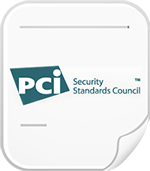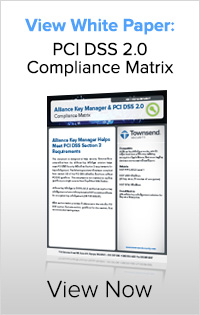 Compliance regulations are moving inexorably towards requiring the protection of sensitive data. The private information of customers, employees, patients, vendors and all of the people we come into contact with as Enterprises, must be protected from loss and misuse. At the same time that regulations are getting more teeth, there is more consensus about the technologies to protect data in our applications and databases. Encryption and tokenization are now the accepted methods of protecting data, and encryption key management is central to both technologies.
Compliance regulations are moving inexorably towards requiring the protection of sensitive data. The private information of customers, employees, patients, vendors and all of the people we come into contact with as Enterprises, must be protected from loss and misuse. At the same time that regulations are getting more teeth, there is more consensus about the technologies to protect data in our applications and databases. Encryption and tokenization are now the accepted methods of protecting data, and encryption key management is central to both technologies.
How fast are regulations changing? Really fast. The Payment Card Industry Security Standards Council will update the PCI Data Security Standard (PCI DSS) this year, and will be on a three year cycle of updates. Merchants accepting credit cards will have about 18 months to implement the changes. State privacy laws are undergoing frequent changes, most of which make the rules more stringent. Minnesota, Nevada, and Washington State have made recent changes. The HITECH Act of 2009 and related guidance further tightens the rules around protecting patient data, and further guidance is expected this year. Last, but not least, the federal government is moving new legislation through Congress to enact a national privacy law.
These changes are coming fast, and they have one thing in common: data protection requirements are getting stronger, not weaker. Companies and organizations should be paying attention to their data protection strategies now in order to avoid expensive rip-and-tear operations in the future.
One other tendency of the evolving regulations is this: A clear reference to standards for data protection. All of the mentioned standards now make reference to widely accepts standards, usually those of the National Institute of Standards and Technology (NIST) which publishes standards and testing protocols for encryption and key management. Over the last two years PCI (and related guidance from Visa), the HITECH Act, state privacy laws, and other regulations have specifically referenced NIST for data encryption and key management standards.
Companies and organizations acquiring data protection technologies should look carefully at how solutions match up to the standards. And a word of warning here: There is still a lot of snake oil in the data protection industry. Be sure that your data protection vendor can prove that their solutions actually meet the NIST standards. This is actually not hard to independently verify – NIST publishes on-line lists of vendors who certify their solutions to the standard.
Encryption is a well defined technology to protect data through the use of an encryption algorithm and secret key. When combined with proper key management, encryption provides a well accepted method of protecting sensitive data. There is a long history of work by professional cryptographers and NIST on defining how good encryption and key management should work, and you can easily determine which vendors meet the standard through the certification process.
Tokenization is a new technology and lacks the history and standards of encryption, but which incorporates encryption technologies. Tokenization works by substituting a surrogate value (or “token”) for the original data. By itself the token does not tell you anything about the original value which might be a credit card number, patient ID, and so forth. But tokenization requires that you use good encryption practices to protect the sensitive data in the token database. This means you have to use a tokenization solution that meets the same stringent standards for encryption and key management. When acquiring a tokenization solution, you will want to use the same diligence about encryption and key management that you would use for a pure encryption solution – that is, the solution should be built to standards and the vendor should be able to prove it through the NIST certification process.
Remember, a tokenization solution will be IN SCOPE for a PCI audit!
Tokenization standards are still evolving. Bob Russo of the PCI Security Standards Council indicated that the council will be taking up work on this in 2010. Visa just released a best practices guide for tokenization (you can get it here), and you can probably expect the eventual standards to incorporate much of this guidance. Additionally, the X9 organization is also working on standards for tokenization.
In regards to tokenization standards, stay tuned ! Much more is coming our way.
Encryption, tokenization, and key management – this is the trifecta for protecting data at rest. I’ll have more comments in the future about tokenization as we analyze the best practice guidance from Visa and help you connect the dots with our encryption, tokenization, and key management solutions.
Patrick




 As we’ve developed more solutions for the Microsoft Windows platform I’ve come to appreciate the rich set of programming languages that Microsoft provides to developers, and the deep support they provide to both beginner and advanced programmers. There is a large group of experts inside of Microsoft and in the outside developer community that generously supports Windows developers. Whether you develop in .NET, or C#, no one has done better than Microsoft and generating and supporting this developer community. At a recent SQL PASS conference I saw T-Shirts with the slogan:
As we’ve developed more solutions for the Microsoft Windows platform I’ve come to appreciate the rich set of programming languages that Microsoft provides to developers, and the deep support they provide to both beginner and advanced programmers. There is a large group of experts inside of Microsoft and in the outside developer community that generously supports Windows developers. Whether you develop in .NET, or C#, no one has done better than Microsoft and generating and supporting this developer community. At a recent SQL PASS conference I saw T-Shirts with the slogan: One clear direction I’ve observed over the last few months is the focus of QSA auditors and other security professionals on the protection of sensitive data AFTER it traverses the Internet and then lands in a database on a hard disk drive. We have really good ways of protecting data in transit using 128-bit SSL encryption. For example, the web protocols HTTPS and FTPS provide for the ability to encrypt the data in transit, and Secure Shell SSH also provides strong encryption. But after the data reaches the end point of its journey it lands on a hard drive somewhere, and it is often exposed to loss at that point. I believe that’s why security auditors are putting a lot of emphasis now on making sure that data is encrypted when it hits a hard drive.
One clear direction I’ve observed over the last few months is the focus of QSA auditors and other security professionals on the protection of sensitive data AFTER it traverses the Internet and then lands in a database on a hard disk drive. We have really good ways of protecting data in transit using 128-bit SSL encryption. For example, the web protocols HTTPS and FTPS provide for the ability to encrypt the data in transit, and Secure Shell SSH also provides strong encryption. But after the data reaches the end point of its journey it lands on a hard drive somewhere, and it is often exposed to loss at that point. I believe that’s why security auditors are putting a lot of emphasis now on making sure that data is encrypted when it hits a hard drive.